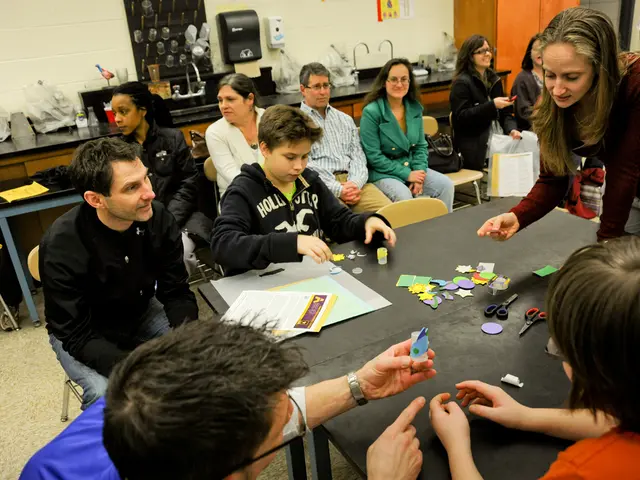Short-Term Antibiotic Use Fuels Long-Term Resistance in Gut Bacteria
Long-Term Resistance Developed in Intestinal Bacteria of Humans Due to Short-Term Antibiotic Exposure, Research Shows
In a chilling revelation, a recent study conducted by researchers at Stanford University finds that even a brief stint of antibiotic usage can spark persistent resistance in human gut bacteria, posing a significant threat to global health.
This particular study zeroed in on ciprofloxacin, a common antibiotic used to combat diverse bacterial infections. The researchers discovered that ciprofloxacin exposure can lead to resistance that emerges across various species and endures for over ten weeks.
Antimicrobial resistance (AMR) poses a grave health problem, with millions of lives claimed annually due to it. Excessive and improper antibiotic use largely fuels AMR. Previous research has relied on laboratory experiments and animal models to comprehend AMR. However, the new study, published in the prestigious journal Nature, offers a fresh perspective by performing a longitudinal metagenomic study on 60 healthy adults.
The researchers orchestrated the experiment by administering 500 mg of ciprofloxacin (twice a day for five days) to the participants, who were then subjected to stool samples and a computational tool to map 5,665 genomes representing the commensal bacteria populations. The team identified a staggering 2.3 million genetic variants, with 513 populations showing genetic alterations or mutations in gyrA - a gene linked to fluoroquinolone resistance.
Resistance often arises independently within individuals. Close to 10% of initially susceptible bacterial populations acquired resistance through these mutations. Remarkably, this resistance lingered long after exposure, with predictions suggesting it could remain detectable for up to a year.
Notably, resistance was more likely to manifest in more populous bacterial populations before treatment, which saw significant decreases during exposure. As the researchers write in their paper, "Our findings revealed that brief ciprofloxacin exposure drives the evolution of resistance in gut commensals, with mutations persisting long after exposure."
This study sheds light on the human gut's capacity to foster resistance development and identifies key genetic and ecological factors that shape bacterial adaptation inside the human body.
Key Insights:
- Mechanisms of Resistance Development: Ciprofloxacin, a fluoroquinolone, applies a strong selective pressure even during brief periods (days to weeks), eradicating susceptible bacteria and allowing resistant strains to thrive. Resistance often materializes through mutations in bacterial DNA gyrase (gyrA/gyrB) or topoisomerase IV genes, reducing drug binding affinity.
- Post-Treatment Persistence: Resistance mutations can persist for months after treatment cessation, owing to factors like vertical transmission and horizontal gene transfer.
- Microbiome Dynamics: Short-term ciprofloxacin disturbs commensal bacteria that normally hinder resistant pathogens, creating extended opportunities for resistant strains to proliferate unchecked.
- Clinical Implications: While fecal microbiota transplantation (FMT) offers potential for restoring microbial competition, this study underscores brief antibiotic exposures' ability to create long-lasting resistance reservoirs.
References:
- Medical News (2025): Short courses cause mutations persisting months post-treatment.
- MDPI (2025): Antibiotics disrupt microbial balance, enabling resistant clones.
- Ciprofloxacin, a common antibiotic used for various bacterial infections, can lead to resistance that lasts over ten weeks in gut bacteria, according to a study by Stanford University researchers.
- Antimicrobial resistance (AMR) is a significant threat to global health, with millions of lives lost each year due to it, and excessive and improper antibiotic use is a major contributing factor.
- The new study, published in the Journal of Nature, offers a fresh perspective by performing a longitudinal metagenomic study on 60 healthy adults, to better understand AMR.
- In this study, researchers found that genetic alterations or mutations in the gyrA gene, linked to fluoroquinolone resistance, emerged across various species after ciprofloxacin exposure.
- Remarkably, these resistance mutations can linger for up to a year after exposure to ciprofloxacin, finding both in genetic transmission (vertical) and sharing between bacteria (horizontal gene transfer).
- Brief ciprofloxacin exposure was found to drive the evolution of resistance in gut commensals, by eliminating susceptible bacteria and allowing resistant strains to thrive.
- Tragically, close to 10% of initially susceptible bacterial populations acquired resistance through these mutations, which can persist for months post-treatment.
- While therapeutic strategies like fecal microbiota transplantation (FMT) might offer potential for restoring microbial competition, caution should be exercised in the use of antibiotics to avoid creating long-lasting resistance reservoirs, as this study suggests.







